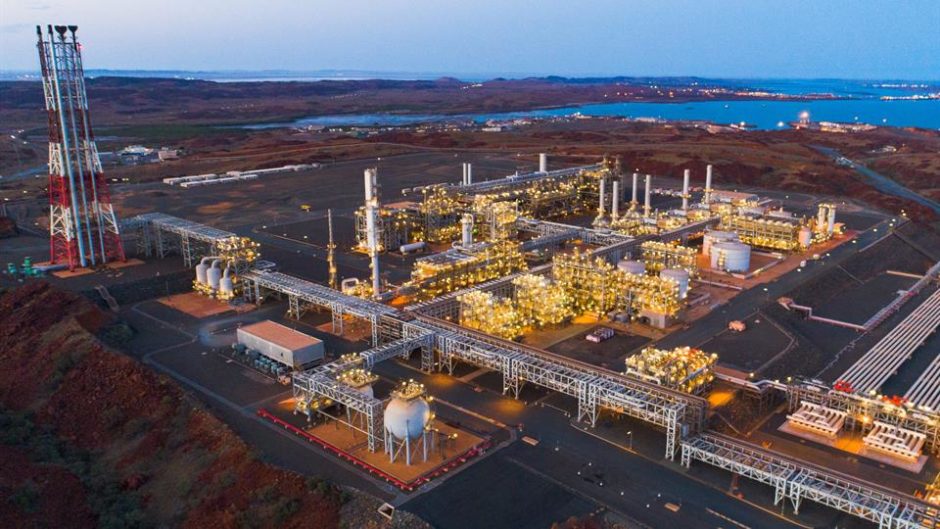
Woodside Energy’s potential merger with Santos, and a recent deal to secure volumes in Mexico, are part of a strategy to continue to optimise its LNG portfolio and increase margins in its LNG division.
Rather than simply producing and shipping gas under long-term contracts between pre-agreed sources and destinations, portfolio players can optimise their portfolios, taking advantage of market volatility and enabling them to better respond to shorter-term demand spikes. Traders have taken an interest in this position, just as BP, Shell and TotalEnergies have.
Woodside is yet to scale its portfolio to the size of those firms. In 2022 the firm sold just over 11 million tonnes of LNG. This is far less than Shell at 66mn tonnes, TotalEnergies at 48mn tonnes and slightly less than BP, which sold 19mn tonnes.
Evolution
Over the last few years, Woodside has progressively expanded its supply portfolio and loosened its contract structures. This will enable it to get closer to the volumes — and margins — of the major portfolio players.
“We have adjusted our strategy to LNG marketing over the last, probably, five years to move away from project specific contracting to portfolio contracting,” said CEO Meg O’Neill at the firm’s recent investor day.
Woodside no longer sells any project-specific LNG. Instead, everything is sold on a portfolio basis under contracts that allow flexibility of both source and destination.
“As the market has grown and evolved and become more sophisticated we’re no longer source specific and the customers are often no longer destination specific as well,” said O’Neill.
During 2022, Woodside’s increasing portfolio optimisation allowed it to capture margins from stronger oil and gas prices averaging $98.4 per barrel of oil equivalent. This is up 62% on the year before, the firm said in its annual results.
“For the pure trading part of our business the margins normally are quite slender, but where we can really make a big difference … is in the optimisation,” said O’ Neil, presenting the results.
Portfolio planning
A successful portfolio player needs uncommitted volumes in the portfolio from a geographically distributed network of supply sources. They also need a long shipping position, enabling flexibility to respond to short-term opportunities.
Woodside’s LNG shipping fleet now includes six vessels under long-term contracts and multiple vessels on short-term charter. The company chartered an additional five newbuild LNG ships in 2022 — to be delivered between 2024 and 2027 — to support the delivery of Scarborough LNG cargoes and the growth in its trading activities.
“A long shipping position is vital for short-term trading and portfolio optimisation activities,” an LNG shipping broker told Energy Voice.
A major part of operating the fleet efficiently is ensuring that vessels undertake as few journey miles as possible without cargoes. In the case of Woodside, this means trying to prevent long journeys from Pacific Basin supply sources to Atlantic Basin destinations, instead servicing Atlantic Basin demand with a closer source of supply.
Picking destinations
Woodside signed a deal with Cheniere Energy in 2014, for 0.85mn tonnes per year from its Corpus Christi facility. This gave the Australian company a firm supply base in the Atlantic Basin, allowing it to better service its 0.8mn tpy European supply contracts with Uniper, as well as any emerging European spot demand.
Ongoing European demand is still an unknown in LNG markets. Following the end of pipeline volumes from Russia, firms such as Shell predicted an additional 140mn tpy of additional demand from Europe, but mild winters have dampened expectations of these levels to date. Nevertheless, Europe could emerge with a lot a healthy level of spot demand in the case of a colder-than-average winter.
The firm has separate supply contracts with Uniper and RWE, for cargoes to Pacific Basin destinations rather than to Europe. Those firms are also looking to build geographically distributed trading positions.
Asian access
The 1.3mn tpy volumes from Mexico Pacific agreed last week will give Woodside the option of sending the volumes to Asia Pacific markets. It could send this LNG to European markets but would need to navigate the Panama Canal, which adds expense and time.
The Mexican project is expected to reach a final investment decision (FID) in the first half of 2024. The first two trains at the plant could start up in 2027.
In addition to its North American volumes, Woodside expects to produce 83-85mn tpy from its own assets including Pluto LNG, North West Shelf LNG and Wheatstone LNG in 2023. Much of this is contracted on an equity basis to project partners.
Last year, the firm also contracted a further 2.5mn tpy from the Commonwealth LNG project in the US from 2026. Scarborough LNG will give it a further 8mn tpy, also from 2026.
The firm said on its investor day that it was looking for further opportunities to build its supply portfolio.
It recently confirmed that it was in early stage merger talks with Santos. Should the deal move ahead, the merged company would have an additional 7.9mn tpy of volumes. Gladstone LNG, Papua New Guinea LNG and Darwin LNG would provide the additional volumes. Crucially, these projects are in close proximity to East Asian markets.
Pricing
One of the advantages that portfolio players can leverage is greater access to more volatile gas hub pricing, which includes cargoes sold against the Platts JKM price marker. Such pricing tends to be used for shorter term contracts, as opposed to long term pricing. This has historically tended to be linked to oil.
In 2023, the firm’s exposure to gas hub pricing was at 20%. In the third quarter of 2023, Woodside sold 29% of its LNG at prices linked to gas hub indices.
Better than expected performance at the North West Shelf LNG project and high reliability at Pluto LNG gave the firm more volumes to send to destinations with gas hub pricing.
“While LNG prices have come down from the extreme peaks that we saw during 2022, spot prices are well above long-term averages and volatility remains high. This highlights a continued risk premium in the market,” said executive vice president marketing and trading Mark Abbotsford on the firm’s investor day. “Woodside’s portfolio is positioned to capture this value,” he added.

